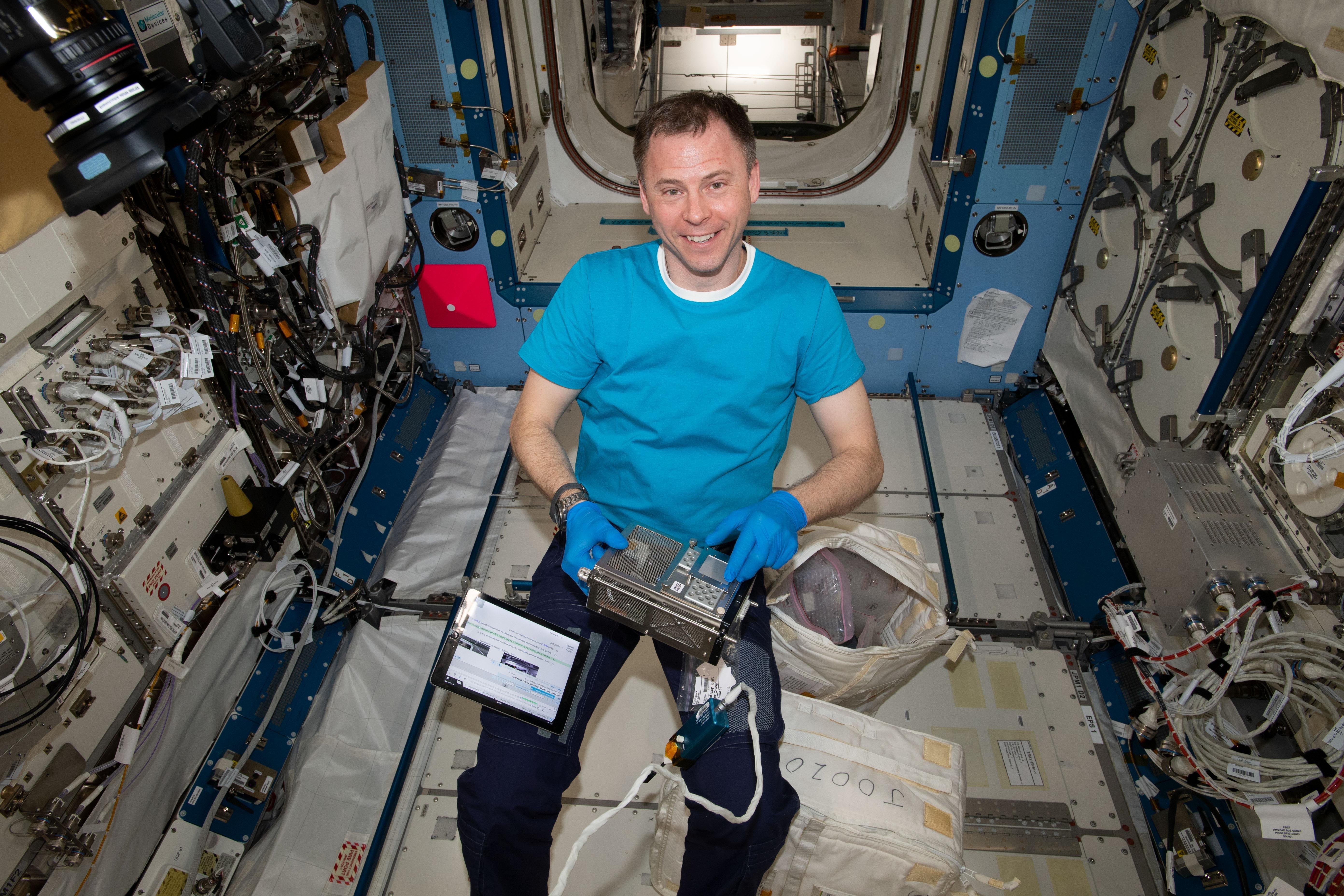- completed
[Space Moss]
Environmental response and utilization of mosses in space
- Biology and Biotechnology
ISS Science for Everyone
SCIENCE OBJECTIVES FOR EVERYONE
Environmental Response and Utilization of Mosses in Space – Space Moss (Space Moss) grows mosses aboard the space station, and on Earth, to determine how microgravity affects their growth, development, gene expression, photosynthetic activity, and other features. Tiny plants without roots, mosses need only a small area for growth, an advantage for their potential use in space and future bases on the Moon or Mars.
Experiment Description
RESEARCH OVERVIEW
- When utilizing mosses in space, it is necessary to confirm the physiological responses to stimuli by performing experiments in space.
- In the Environmental Response and Utilization of Mosses in Space–Space Moss (Space Moss) investigation, researchers analyze the changes of the growth rate, biomass, morphology, photosynthetic activity, gene expression and protein profiles, and cytoskeletal dynamics of mosses exposed to microgravity conditions.
- The resultant data is compared with additional data obtained from other plant investigations conducted on Earth and in space. This comparative study provides the first insights to understand the generality and diversity of land plants and how they grow and respond when exposed to the microgravity environment.
DESCRIPTION
When the moss Physcomitrella patens is grown under a hypergravity condition for about one to two months using a custom-built centrifuge equipped with a lighting system on the ground, it was found that canopy-based plant growth was significantly increased at ten times normal earth gravity (10xg), and was strongly affected by increases in plant numbers. Additionally, rhizoid lengths for gametophores were increased, and chloroplast size in the leaves were also increased. It was further found that the area-based photosynthesis rate of the moss was enhanced at 10xg.
The results suggest that in response to hypergravity, the moss increased the plant numbers together with the increase in chloroplast size and the increase of photosynthesis rate, leading to the enhancement of overall growth rate in the colony. This result also implies that when moss is grown in the microgravity environment of space for a long period of time, the opposite growth and physiological responses to the hypergravity environment, i.e. reduction of photosynthesis rate, chloroplast size, rhizoid length and plant numbers, leading to the reduction of overall growth rate, could be anticipated.
The goal of the Environmental Response and Utilization of Mosses in Space – Space Moss (Space Moss) investigation is to see if this hypothesis is correct. In uncovering the molecular mechanisms on how distinctly gravity affects plant growth and physiology, this research also plans to identify differentially expressed genes between microgravity and hypergravity conditions. Thus this research could allow for the development of engineered plants that grow better under hostile environmental conditions in space, such as aboard the International Space Station and future Moon/Mars bases, as well as on the Earth.
Media Gallery


Applications
SPACE APPLICATIONS
Better understanding of the physiological responses of mosses in space may lead to developing strains of the plants suited for growth on the space station, future space missions, and bases on the Moon or Mars.
EARTH APPLICATIONS
Moss plants change their biomass and photosynthesis rate in response to changes in gravity. Space Moss provides a better understanding of the mechanisms involved, which has potential applications for engineering plants to grow better on Earth.
Operations
OPERATIONAL REQUIREMENTS AND PROTOCOLS
Runs 1 and 2:
Eight Plant Culture Chambers containing moss plants (Physcomitrella patens wild-type) are launched at 2°C. The Plant Culture Chambers (8) are installed into the Plant Experiment Unit (8) and installed the into the Cell Biology Experiment Facility (CBEF) in the Kibo module: 4 chambers are installed in the microgravity section, and 4 chambers in artificial 1G section. Daily images from all plant chambers are downlinked daily. After incubation at 25°C more than 25 days, a crew member retrieves plant chambers and harvests them for sample return. Some of the samples are fixed using a Chemical Fixation Bag, and the rest of the samples are returned in a live state. Samples are stored at 2°C or -95°C, and returned to Earth. The same experiment is repeated twice as Run1 and Run 2, for acquiring enough samples for analysis.
Run 3:
A crew member installs the Plant Observation Dishes (3) into the Plant Experiment Unit (3), and incubates them in the CBEF at +25°C for 72 hours. After 72 hours in the CBEF, one dish is retrieved and placed in the JAXA Fluorescence Microscope in the JEM cabin for observation. All observations are controlled from the ground, and image data is downlinked. After observing the dish for 1 day, other 2 dishes are continuously observed over the next 2-3 days.
Publications
PRINCIPAL INVESTIGATOR(S)
FUJITA Tomomichi [Hokkaido University]
Unless specified otherwise, rights to all images belong to ©JAXA



